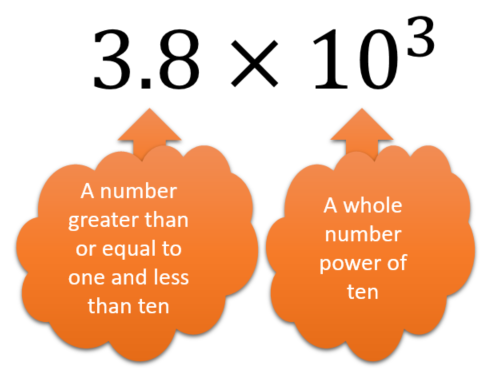
 |
Standard Form :: Level 10Test your understanding of standard form (scientific notation) with this self-marking, multiple-choice quiz. |
You can earn a trophy if you get at least 7 questions correct.
InstructionsTry your best to answer the questions above. Choose one of the five possible answers. When you have finished click the "check" button. If you have any questions wrong, do your best to do corrections but if there is anything you don't understand, please ask your teacher for help. When you have got all of the questions correct you may want to print out this page and paste it into your exercise book. If you keep your work in an ePortfolio you could take a screen shot of your answers and paste that into your Maths file. You can also claim a 'Transum Trophy' by completing this quiz. |
||
|
|
||
Transum.orgThis web site contains hundreds of free mathematical activities for teachers and students. Click here to go to the main page which links to all of the resources available. Please contact us if you have any suggestions or Questions.
|
|
More Activities: |
|
Comment recorded on the 19 November 'Starter of the Day' page by Lesley Sewell, Ysgol Aberconwy, Wales: "A Maths colleague introduced me to your web site and I love to use it. The questions are so varied I can use them with all of my classes, I even let year 13 have a go at some of them. I like being able to access Starters for the whole month so I can use favourites with classes I see at different times of the week. Thanks." Comment recorded on the 2 April 'Starter of the Day' page by Mrs Wilshaw, Dunsten Collage,Essex: "This website was brilliant. My class and I really enjoy doing the activites." |
Teacher! Are you delivering Maths lessons online? Tutors! Are your tutorials now taking place via a video link? Parents! Has home-schooling been thrust upon you at short notice? There are many resources to help you on the Maths At Home page. From ready made lesson plans to software suggestions and it's all free. Stay safe and wash yout hands! |
|
AnswersThere are answers to this exercise but they are only available to teachers who have subscribed to Transum and are currently signed in on this computer. A Transum subscription unlocks the answers to most of the student online exercises, quizzes and puzzles. It also provides the teacher with access to quality external links on each of the Transum topic pages so that teachers can easily find the excellent resources we have found and add to the collection themselves. Class lists, lesson plans and assessment data can also be stored in the Class Admin application and the teacher also has access to the Transum Trophies earned by class members. |
||
Go MathsLearning and understanding Mathematics, at every level, requires learner engagement. Mathematics is not a spectator sport. Sometimes traditional teaching fails to actively involve students. One way to address the problem is through the use of interactive activities and this web site provides many of those. Click here for more activities designed for students in upper Secondary/High school. |
||
TeachersIf you found this activity useful don't forget to record it in your scheme of work or learning management system. The short URL, ready to be copied and pasted, is as follows: Alternatively, if you use Google Classroom, all you have to do is click on the green icon below. Do you have any comments? It is always useful to receive feedback and helps make this free resource even more useful for those learning Mathematics anywhere in the world. Click here to enter your comments. |
||
Close

Level 1 - Converting from standard form. Positive indices.
Level 2 - Converting from standard form. Negative indices.
Level 3 - Converting from standard form. Mixed including zero as the index.
Level 4 - Converting to standard form. The inverse of level 1.
Level 5 - Converting to standard form. The inverse of level 2.
Level 6 - Converting to standard form. The inverse of level 3.
Level 7 - Mixed calculations.
Level 8 - Mixed calculations without a calculator.
Level 9 - Standard form numbers in fractions without a calculator.
Level 10 - Multiple choice exercise.
Standard Form Algebra - Deeply test your understanding of standard form by involving a little algebra.
Exam Style questions are in the style of GCSE or IB/A-level exam paper questions (worked solutions are available for Transum subscribers).
Answers to this exercise are available lower down this page when you are logged in to your Transum account. If you don’t yet have a Transum subscription one can be very quickly set up if you are a teacher, tutor or parent.
See the National Curriculum page for links to related online activities and resources.
Standard form, also known as scientific notation, is a way of writing numbers that accommodates values too large or small to be conveniently written in standard decimal notation.

To convert a number to standard form means to write it in the form a x 10b where a is a number greater than or equal to one and less than ten and b is an integer.
34800
= 3.48 x 10000
= 3.48 x 10 x 10 x 10 x 10
= 3.48 x 104
0.0348
= 3.48 ÷ 100
= 3.48 x 1⁄100
= 3.48 x 10-2
Finally note that any number raised to the power zero is 1 so:
3.48
= 3.48 x 1
= 3.48 x 100
Close
